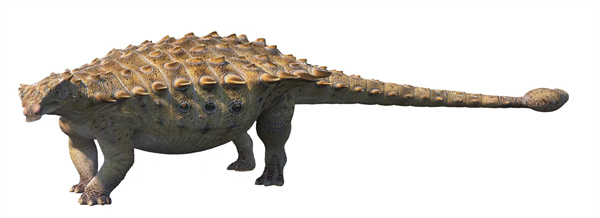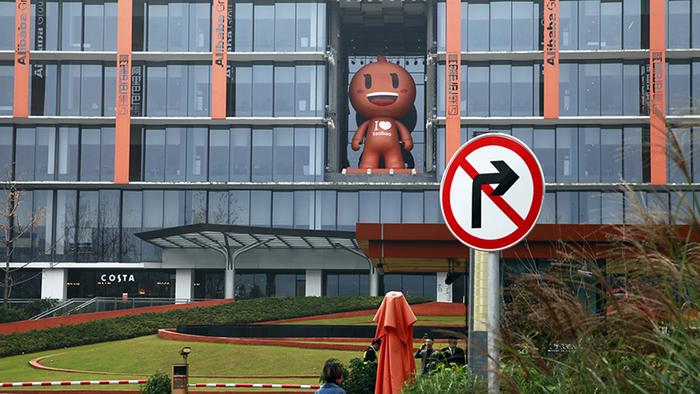NASA drills freaky scenario where elusive asteroid heads towards Earth
What if,关键字3 in 14 years, a newly-discovered asteroid was likely to strike Earth?
But that's not all.This threatening space rock, some 330 to 1,050 feet in diameter (or 100 to 320 meters), has just disappeared behind the sun, making crucial observations impossible for the next seven months.
To prepare for such an unsettling scenario, NASA just completed an exercise to "inform and assess our ability as a nation to respond effectively to the threat of a potentially hazardous asteroid or comet." A possible asteroid or comet collision can pose a number of uncertainties, which the space agency continued to test during the recent fifth Planetary Defense Interagency Tabletop Exercise.
You May Also Like
"A large asteroid impact is potentially the only natural disaster humanity has the technology to predict years in advance and take action to prevent," Lindley Johnson, NASA's planetary defense officer emeritus, said in a statement.
SEE ALSO: NASA scientist viewed first Voyager images. What he saw gave him chills.Importantly, there are no known asteroids on a collision course with Earth for at least 100 years, and the chances of a major impact in our lifetimes is extremely small, astronomers say. Planetary defense agencies have never needed to raise an alarm about a threatening impact — though you've undoubtedly seen sensationalized news about menacing asteroids over the years.
"We have never actually issued a warning," Johnson previously told Mashable. (But they have informed the public about what some asteroids of interest are doing.)
"We have never actually issued a warning."
But, at some point, an impact is inevitable. "Yes, asteroids have hit Earth over the course of its history, and it will happen again," NASA notes.
In the latest asteroid collision scenario, the space agency presented a hypothetical object some 330 to 1,050 feet across that has a 72 percent chance of walloping Earth. Something in that range, while not nearly the biggest class of asteroid, could be hugely destructive. Take the 600-foot-deep "Meteor Crater," which landed in present-day Arizona 50,000 years ago. The culprit was likely some 100 to 170 feet across, but created a blast big enough to destroy Kansas City.
As the hypothetical trajectory below shows, this asteroid passes over some densely populated areas like Dallas, which would almost certainly create a national emergency, even if the exact trajectory is uncertain. The scenario's impact is expected in 14 years, in July 2038, giving countries a relatively short time to prepare — especially with a seven month gap in surveillance. From initial observations, the object's size, composition, and trajectory are uncertain.
"To complicate this year’s hypothetical scenario, essential follow-up observations would have to be delayed for at least seven months — a critical loss of time — as the asteroid passed behind the Sun as seen from Earth’s vantage point in space," the space agency said.
 A hypothetical asteroid impact scenario created for the Planetary Defense Interagency Tabletop Exercise. Credit: NASA
A hypothetical asteroid impact scenario created for the Planetary Defense Interagency Tabletop Exercise. Credit: NASA  A slide from the Planetary Defense Interagency Tabletop Exercise showing courses of action for contending with a likely impact. Credit: Planetary Defense Interagency Tabletop Exercise
A slide from the Planetary Defense Interagency Tabletop Exercise showing courses of action for contending with a likely impact. Credit: Planetary Defense Interagency Tabletop Exercise This latest planetary defense exercise underscores how critical near-Earth object surveillance is (these are objects that come within some 30 million miles of Earth's orbit around the sun). Fourteen years is a rushed timeline.
"You need to know what's coming, when it's coming, and how hard it's going to hit," Eric Christensen, the director of the NEO-seeking Catalina Sky Survey in Arizona, previously told Mashable.
Related Stories
- NASA spacecraft spots dead robot on Mars surface
- Astronomers just witnessed a whole galaxy 'turn on the lights' in real-time
- The best telescopes for gazing at stars and solar eclipses in 2024
- The mega-comet hurtling through our solar system is 85, yes 85, miles wide
- The first images of Earth are chilling
"You need to know what's coming, when it's coming, and how hard it's going to hit."
Among the courses of action discussed by NASA, FEMA, and other partners included a flyby of the incoming object, which would vastly improve our grasp of its composition, rotation, speed, and beyond. Will it break apart into smaller pieces in Earth's atmosphere? Is it rubble-like, or solid? How likely is it to hit the ocean? Also discussed was the major operation, a "Purpose-Built Rendezvous," which implies using a spacecraft to deflect an object.
Asteroid deflection is a realistic future possibility. In 2022, NASA plunged a refrigerator-sized spacecraft into a stadium-sized asteroid, with hopes of simply nudgingit. It was an unprecedented, successful test — proving humanity could alter the path of a menacing asteroid, should one ever be headed our way. The impact cut the asteroid Dimorphos' loop around its parent asteroid (they journey around the sun as a pair, or binary system) by a whopping 33 minutes and 15 seconds — when the original goal was to change it by at least 73 seconds.
 Participants at the fifth Planetary Defense Interagency Tabletop Exercise. Credit: NASA / JHU-APL / Ed Whitman
Participants at the fifth Planetary Defense Interagency Tabletop Exercise. Credit: NASA / JHU-APL / Ed Whitman Ultimately, this latest tabletop impact exercise resulted in a number of "High-level Takeaways." A glaring problem is the uncertainties involved in planning for a likely impact. The participants recommended developing "the capability to rapidly launch an NEO [near-Earth object] reconnaissance mission," which could include repurposing existing spacecraft.
Thankfully, NASA and its planetary defense partners will continue exercising hypothetical asteroid threats. It behooves us to be prepared, even if the overall risk is low.
The risks of an asteroid impact
Here are today's general risks from asteroids or comets both tiny, and very large. (Importantly, even relatively small rocks are still threatening, as the surprise 56-foot (17-meter) rock that exploded over Russia and blew out people's windows in 2013, proved.
Every single day about 100 tons of dust and sand-sized particles fall through Earth's atmosphere and promptly burn up.
Every year, on average, an "automobile-sized asteroid" plummets through our sky and explodes, explains NASA.
Impacts by objects around 460 feet in diameter occur every 10,000 to 20,000 years.
A "dinosaur-killing" impact from a rock perhaps a half-mile across or larger happens on 100-million-year timescales.
(责任编辑:上神难求)
-
 在苍翼混沌效应中桃儿卡卡玩法比较多样,如平A流、光波流、冲刺流等,不同的玩法有不同的优势,下面就为大家带来苍翼混沌效应中完全体桃儿卡卡的玩法攻略分享,有需要的玩家可以参考。苍翼混沌效应桃儿卡卡完全体流
...[详细]
在苍翼混沌效应中桃儿卡卡玩法比较多样,如平A流、光波流、冲刺流等,不同的玩法有不同的优势,下面就为大家带来苍翼混沌效应中完全体桃儿卡卡的玩法攻略分享,有需要的玩家可以参考。苍翼混沌效应桃儿卡卡完全体流
...[详细]
-
 主料:猪肉丝、青笋、木耳配料: 姜末、蒜末、泡椒调料:水淀粉6勺、盐酌情添加)、蚝油一勺、香醋一勺、一点儿味精、白糖半勺做法:1、大部分材料集体照。2、先用3勺水淀粉将肉丝抓匀,上浆。水淀粉=1份淀粉
...[详细]
主料:猪肉丝、青笋、木耳配料: 姜末、蒜末、泡椒调料:水淀粉6勺、盐酌情添加)、蚝油一勺、香醋一勺、一点儿味精、白糖半勺做法:1、大部分材料集体照。2、先用3勺水淀粉将肉丝抓匀,上浆。水淀粉=1份淀粉
...[详细]
-
 无线鼠标怎么用 无线鼠标使用教程我要评论 2012/03/14 17:28:24 来源:绿色资源网
...[详细]
无线鼠标怎么用 无线鼠标使用教程我要评论 2012/03/14 17:28:24 来源:绿色资源网
...[详细]
-
 相关推荐
...[详细]
相关推荐
...[详细]
-
 7月5日晚,潜山市第二届“村BA”——2024年潜山市“咱们乡村有力量”村BA篮球联赛在该市黄泥镇文昌村广场火热开幕,来自全市各乡镇的16支篮球代表队参加了这场属于自己的篮球盛宴。开幕式上,本地村民展
...[详细]
7月5日晚,潜山市第二届“村BA”——2024年潜山市“咱们乡村有力量”村BA篮球联赛在该市黄泥镇文昌村广场火热开幕,来自全市各乡镇的16支篮球代表队参加了这场属于自己的篮球盛宴。开幕式上,本地村民展
...[详细]
-
弨月马术俱乐部举行2021年第二次北京马协青少年认证体系考试
 青马讯 11月20日,弨月马术俱乐部举行了2021年第二次北京马协青少年认证体系考试。本次共有9名小骑手分别参加基础一级、二级和三级的考试,由中级一星考官张文学负责本场考试。秋韵未尽,冬意欲弄,当天的
...[详细]
青马讯 11月20日,弨月马术俱乐部举行了2021年第二次北京马协青少年认证体系考试。本次共有9名小骑手分别参加基础一级、二级和三级的考试,由中级一星考官张文学负责本场考试。秋韵未尽,冬意欲弄,当天的
...[详细]
-
 三国战纪及正宗PLUS:各版本特征和区别解析一代到目前总共有5个版本,分别是V100JAPANESS BOARD)、V115、V117、V119和V119ALT,而某些人所讲的V112测试版是没有的,
...[详细]
三国战纪及正宗PLUS:各版本特征和区别解析一代到目前总共有5个版本,分别是V100JAPANESS BOARD)、V115、V117、V119和V119ALT,而某些人所讲的V112测试版是没有的,
...[详细]
-
 原料:黄油10g、洋葱半个切片、辣白菜3、400g、金枪鱼罐头一盒、蒜泥一大勺、香油适量、盐适量,豆腐一盒做法:1、锅里放黄油一块,小火化了后放入辣白菜,洋葱快炒,变黄了加水;2、放入金枪鱼罐头里的金
...[详细]
原料:黄油10g、洋葱半个切片、辣白菜3、400g、金枪鱼罐头一盒、蒜泥一大勺、香油适量、盐适量,豆腐一盒做法:1、锅里放黄油一块,小火化了后放入辣白菜,洋葱快炒,变黄了加水;2、放入金枪鱼罐头里的金
...[详细]
-
 面对众多智能垃圾箱型号,选择适合的款式成了客户共同的难题。无论是城中村、学校、小区还是街道,找到粤能环保,问题迎刃而解。作为智能垃圾分类系统的领先供应商,粤能环保通过其高科技解决方案,为客户排忧解难,
...[详细]
面对众多智能垃圾箱型号,选择适合的款式成了客户共同的难题。无论是城中村、学校、小区还是街道,找到粤能环保,问题迎刃而解。作为智能垃圾分类系统的领先供应商,粤能环保通过其高科技解决方案,为客户排忧解难,
...[详细]
-
 Ready抖音的粉丝灯牌会随着用户赠送礼物而升级,灯牌等级越高效果越华丽,下面为大家整理了1-20的抖音粉丝灯牌等级价目表,帮助大家了解各个等级灯牌对应的礼物金额,想要了解的用户可以参考以下的攻略。抖
...[详细]
Ready抖音的粉丝灯牌会随着用户赠送礼物而升级,灯牌等级越高效果越华丽,下面为大家整理了1-20的抖音粉丝灯牌等级价目表,帮助大家了解各个等级灯牌对应的礼物金额,想要了解的用户可以参考以下的攻略。抖
...[详细]

 ZeniMax workers win a tentative union agreement
ZeniMax workers win a tentative union agreement 平面设计开题报告范文
平面设计开题报告范文 《塞尔达传说:旷野之息》剑之试炼挑战攻略
《塞尔达传说:旷野之息》剑之试炼挑战攻略 linux修改系统时间详解
linux修改系统时间详解 甲辰龙年,中外古生物学家恐龙研究再传佳音
甲辰龙年,中外古生物学家恐龙研究再传佳音
